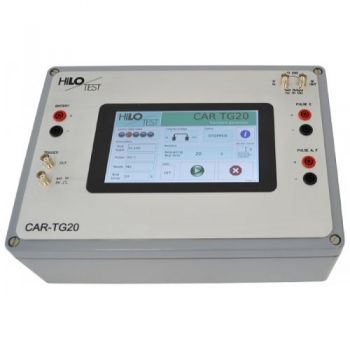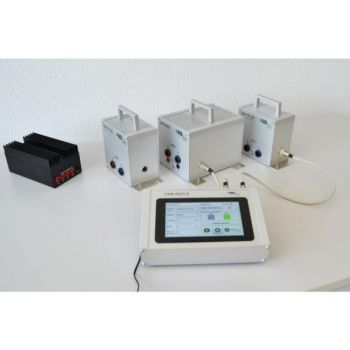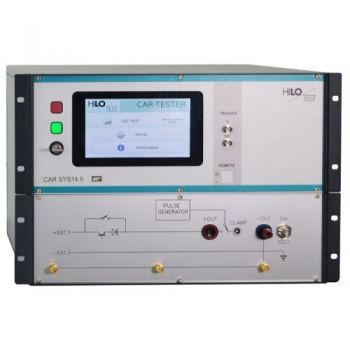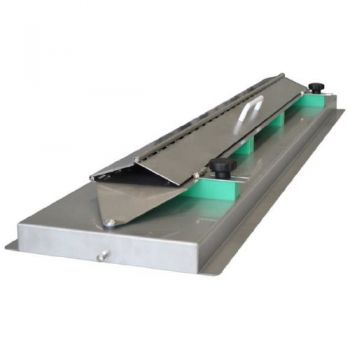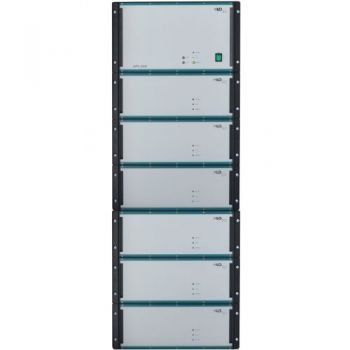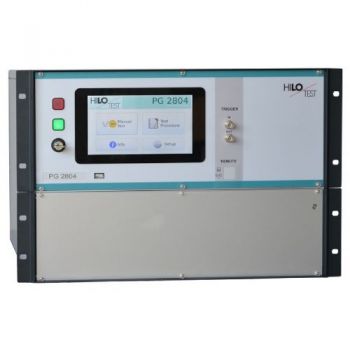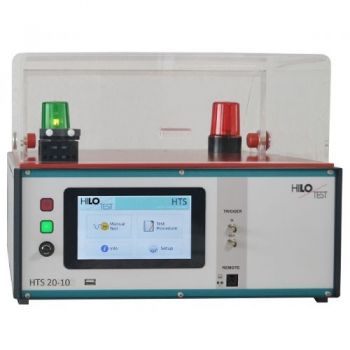Products
The transient generator CAR-TG 20 is designed according to strict specifications of Ford standards. As per standards FORD FMC1278 and EMC-CS-2009.1 the transient tests defined in RI130, CI220 and CI 260 are generated by CAR-TG20. By that is meant pulse forms: A1, A2-1, A2-2, C-1, C-2, and F.
Therefore, a specified 12VAC Potter & Brumfield relay as well as other parts defined by standard create pulses that are close to real appearing transients.
The CAR-PFS-80 is an automotive power fail simulator, which is designed for performing fast voltage dips and drops (micro-interruptions) according to standard requirements, mainly from vehicle manufacturers. The electronic switches in the generator allow switching times below 1 microsecond.
The oscillatory wave generator IPG 2554 S has been designed for immunity testing of electrical and electronic equipment against repetitive damped oscillatory waves according to IEC 61000-4-18 requirements. It generates a decaying sine waveform with ringing frequency from 100 kHz and 1 MHz. These are considered the slow waves. These waveforms represent disturbances occurring in power, control, and signal cables installed in high voltage and medium voltage stations and in heavy industrial installations.
The oscillatory wave generator IPG 2554 F has been designed for immunity testing of electrical and electronic equipment against repetitive damped oscillatory waves (DOW) according to IEC 61000-4-18 requirements. It generates a decaying sine waveform with ringing frequencies 3, 10, and 30.0 MHz. These waveforms represent disturbances occurring in power, control and signal cables installed in high voltage and medium voltage stations and in heavy industrial installations.
- Modular construction
- Electronically and mechanically (+ life time counter) triggerable load switches
- Artificial Network with temperature control
- Shunt resistors: 10 / 20 / 40 / 120Ω
- Battery current: 50A / 100A
The EMC test system is designed for testing electromagnetic immunity of the electrical installation of vehicles and components against supply line transients. EMC - Test Equipment for the electrical installation of vehicles.
- Pulse #1 1-5/2000us, 600 V
- #1 1-5/1000us, 600 V
- Pulse #2a 1 / 50us, 600 V
- Pulse #3 5/100 ns, 800 V
The coupling clamp CDN 2012 conforms exactly to the requirements of ISO 7637-3 and other standards, guaranteeing that tests are carried out in strict compliance with the standard. The CDN allows the fast nanosecond pulse bursts ( ISO 3a and 3b) to be injected in cable runs. Very high impedance signal lines are also to be found in vehicles on which the disruptive effects of ISO pulses 1 and 2 can also show up through capacitive coupling.
CAR AN-HV is used to simulate various types of transients that appear on the high voltage supply lines generated by the switching of various devices.
Pulse A represents ringing caused by switching operations of high voltage semiconductors. Pulse B represents sinusoidal waves generated by harmonics from the grid and revolutions from, for example, electric propulsion motors.
- Battery simulator
- Vehicle voltage up to 1500V
- Fast rise time up to 100V/μs
- Battery current: 30A
- Constant power: 15kW
The CAR arbitrary waveform generator 6000 is a compact EMC testing system for performing voltage variations on supply lines of vehicles. The system strictly complies with the international standards and manufacturer standards that describe phenomena on the power supply of vehicles. Thus, the CAR arbitrary waveform generator 6000 is the optimal voltage power source for battery simulation up to 70V. It can simulate pulse 2b, pulse 4, starting profile, superimposed alternating voltage, and others, up to a battery current of 100A.
Compact EMC test unit designed for testing electromagnetic immunity of the electrical installation of vehicles and components against supply line transients. PG 2804 includes the generation of pulses #5 / Test A and Test B. It is designed to be connected to the power supply interface of the CAR-TESTER. Load Dump Generator EMC-Test Equipment for the electrical installation of vehicles.
- Puls #5 / Test A / Test B
- Ri = 0.5 / 1 / 2 / 4 / 8 Ω
- Used with CAR-SYS 14 or independently with Coupling Network.
High-Voltage DC Test Sets HTS 20-10 are designed for testing dc dielectric strength of components, insulations, air- and surface flash-over gaps. Also for testing SPDs according to IEC 61643-1. The test voltage can be adjusted from 0.2 kV up to 20 kV. The test voltage rises like a ramp from zero to the selected test voltage. The rate of rise can be adjusted from 100 V/sec up to 10000 V/sec. Then the test voltage remains at the selected value for the test time, which can be adjusted from 1 – 1000 sec. Figure: incl. option PA503

